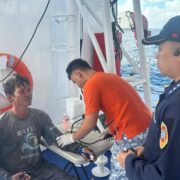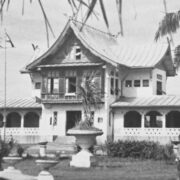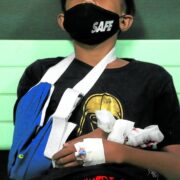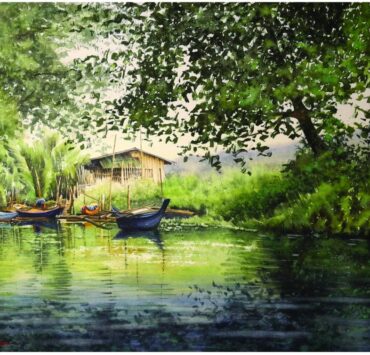Notes from climbing Mt. Fuji for the first time
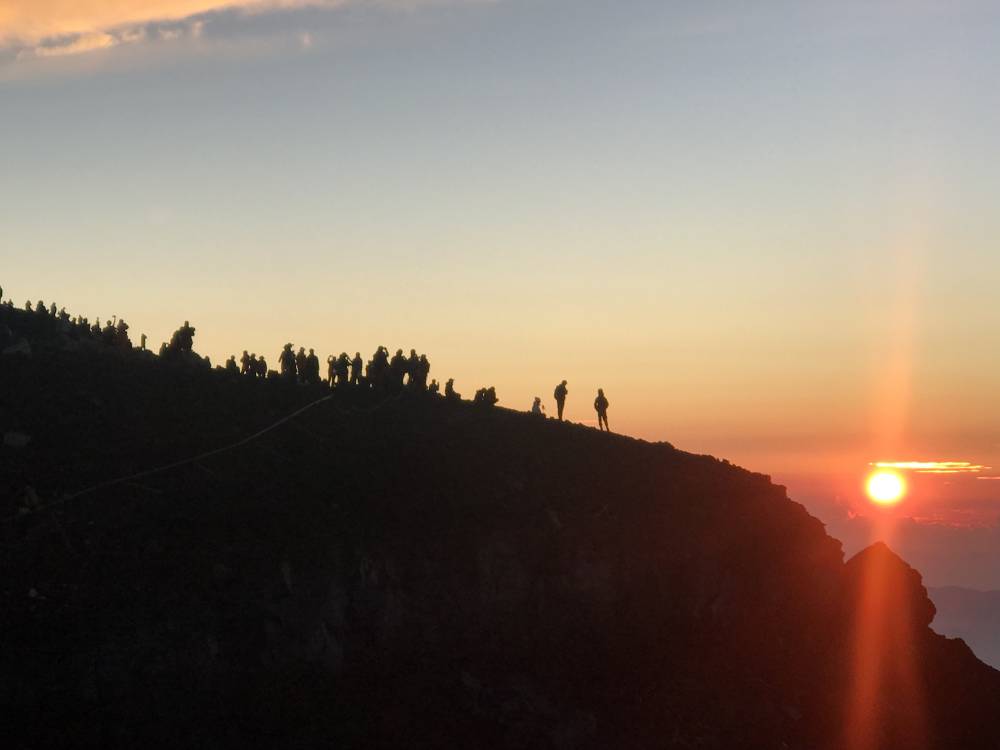
“Ichi do mo noboranu baka ni, ni do noboru baka” is an old Japanese proverb that loosely translates to “He who climbs Mount Fuji once is a wise man; he who climbs it twice is a fool.”
Having lived in Japan for several years now, I have always had the thought of climbing Mt. Fuji, or Fujisan as the locals call it, at the back of my mind. I’ve seen it from the train, from the plane, from a skyscraper, from a ferry, from the peak of other mountains. It’s on the back of the old 1,000-yen Japanese bill. It’s been worshiped, written about in poems and novels and depicted in numerous artworks.
The year I finally decided to climb Fujisan was the year the global pandemic struck, and the sacred mountain was closed to all hikers. It came as a blessing, I suppose. It gave the mountain a much-needed respite from the 200,000 people or so who try to summit it every year.
In April of this year, I moved to Yamanashi prefecture, three hours west of Tokyo by local train. On my daily walk to work, I almost always see Japan’s most recognizable mountain. And so I decided, 2024 is the year I will climb Fuji.
The people who climb Fuji have their own reasons for doing so. Some do it for their social media. Some do it as part of their Japan itinerary. Some, to challenge themselves. Some, because Fujisan is there. I climbed Fuji for a mix of the above reasons, and because it would be a memorable way to mark my approaching 4xth year on this planet.
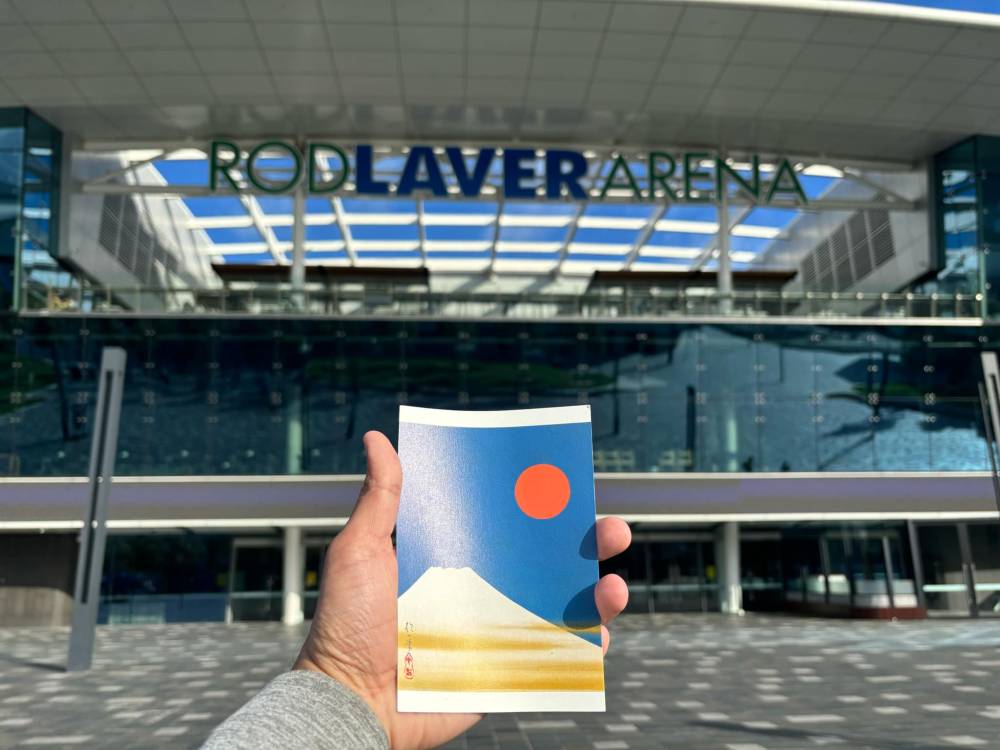
You’ve got mail
“Where did you get those?” the guy in front of me asked, referring to the bunch of postcards I had in my hand. It was 10 minutes to 6 a.m. and I was in line with several other people waiting for the post office to open.
This branch of Japan Post was not your usual post office, though. It opens only for a few weeks a year (this year, it was from July 10 to Aug. 20), operates from 6 a.m. to 2 p.m., and is situated near the crater of an active volcano and located at a height of 3,712 meters. Among Japan Post’s 24,000 or so post offices, the Fujisancho Post Office at the summit of Mt. Fuji holds the distinction of being the highest post office in the country.
If you’re a fellow old-fashioned, #keepsnailmailalive person, then remember to stamp your handwritten postcard with a Mt. Fuji stamp from the Fujisancho Post Office. Posting them from Japan’s most iconic mountain is a sure way to transform a small commercially produced card made with thick paper into an invaluable memento both for you and the recipient. You can also get a climbing certificate from the post office, as tangible proof that you had set foot in the highest mountain of Japan.
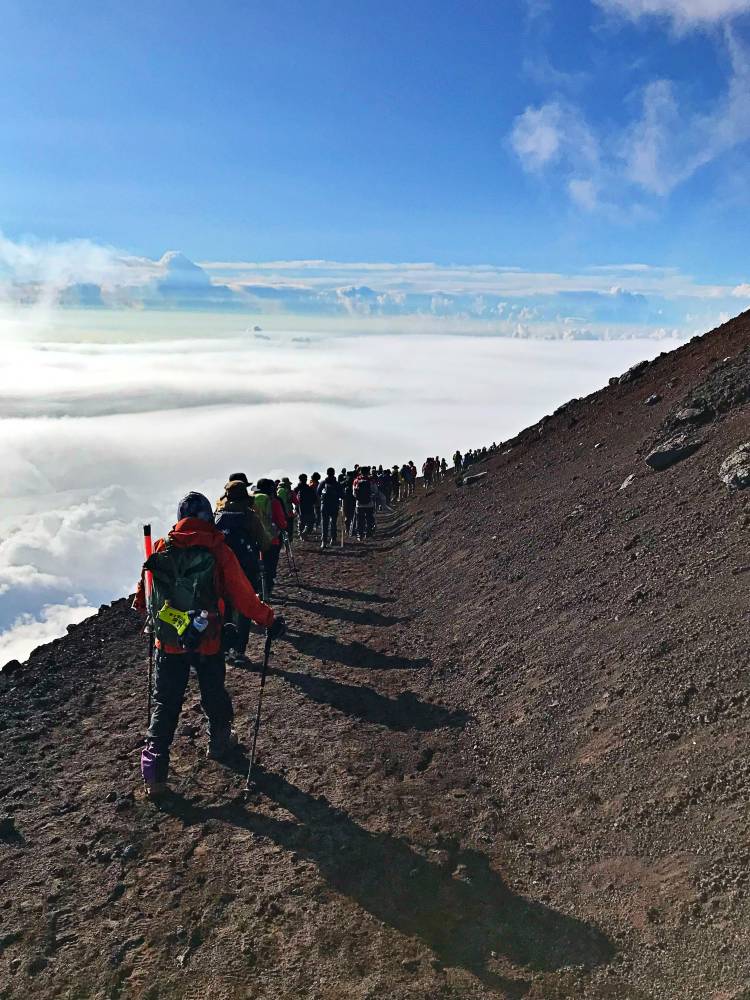
Experiencing ‘goraikou’
Ivan and Jon, the two friends I climbed with, and I were perched on a rocky area just in front of Fujikan, the mountain lodge where we stayed the night. Around us were people attired in an assortment of hiking wear, backpacks in an array of colors and sizes on their backs, cameras and phones all prepared.
We all had one reason we were out in the cold at 4 a.m. that Thursday—goraikou. Japan being Japan, they have a word for viewing the sunrise from the top of a high mountain. And in this case, it’s from the summit of the highest and probably most revered mountain in the country.
We were all tired, sleep-deprived and dealing with sore muscles all over. Yet at the same time, one could sense the feeling of anticipation and excitement in the air.
To my right, I heard a group speaking Bahasa. Nearby was a group with a Vietnamese flag. To my other side was the group from Hong Kong who kindly took our group photo at one of the climbing stations. Not too far from us were Japanese locals directing the traffic of hikers. “Susunde kudasai. Tomaranaide kudasai (Please keep moving. Please don’t stop here).”
Around 5 a.m., one of Mother Nature’s wonders unfolded in front of our eyes. Almost everyone became quiet as the golden orb appeared on the horizon, shattering the darkness all around and revealing the landscape that surrounded Fujisan. I wasn’t sure whether we would witness a sunrise given the previous day’s weather, but we were lucky. It was an experience meant for the books.
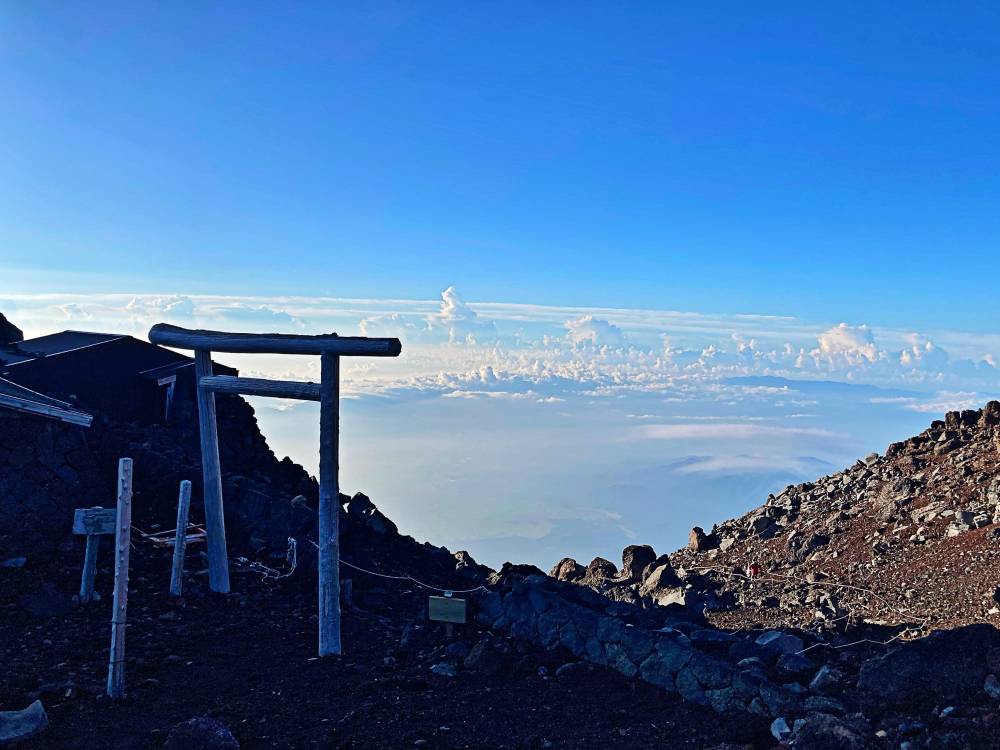
Workout for body, mind, soul
“Fujisan is better appreciated from a distance,” a Japanese friend once said to me. I couldn’t help but remember those words as I made my way to the summit via the Fujinomiya trail. It’s the second most popular trail, but more challenging because of the rocky and steep terrain. The higher we climbed, the more barren the surroundings became.
On the day of our climb, the morning started with clear, sunny weather at the Fujinomiya trail’s fifth station. By the time I reached the sixth station, rain clouds had started to roll in. Gone was the sprawling view of the towns, the greenery and the lakes surrounding Fuji, replaced by what looked like a scene from a horror or disaster movie.
At some point, it felt like a race to the next climbing station between us hikers and the rain clouds. We were all engulfed in fog, and started to feel the temperature drop. I felt a slight headache as the air got thinner. Some hikers started taking out oxygen cans from their bulky backpacks. Thankfully, resting for about 30 minutes or so at the station helped me acclimatize. I wonder now how many quietly asked themselves, “Why am I putting myself through this?”
As with almost every hike that I had done, it’s a physical, mental, spiritual/reflective workout all in one.

Set aside the dull terrain of rocks and reddish, sandy ground with little to no vegetation the higher one went up. Take more than a moment instead to recognize the historical and cultural significance of Fujisan.
Even before it was designated as a Unesco World Heritage Site in 2013, Fujisan has played a role in the lives of generations of Japanese. It’s a dwelling place of the gods and spirits, a deity in itself, a source of artistic and creative inspiration, an iconic symbol for an entire nation. To climb Fuji is literally to walk on sacred ground.
The first person to climb Fujisan is believed to be an unnamed monk back in 663. Women were forbidden to climb until the late 1860s. So, just think, to be counted among the thousands of others, past and present, who have hiked the slopes of Fujisan … hontou ni sugoi desu yo ne! (“That’s really great, isn’t it?”)
What you need to know
The 2024 climbing season is over. If you intend to take on the Fuji challenge next year, here are a few basic things to get you started with your planning.
Choose a trailhead, book a mountain hut as early as possible, do more than enough research. Of the four trails to the summit, Yoshida is the most popular for both beginners and veterans. Mountain huts get filled up quickly so it’s wise to book ahead. Do the research not just on the hike itself but also on transportation, the weather conditions, and yes, climbing etiquette.
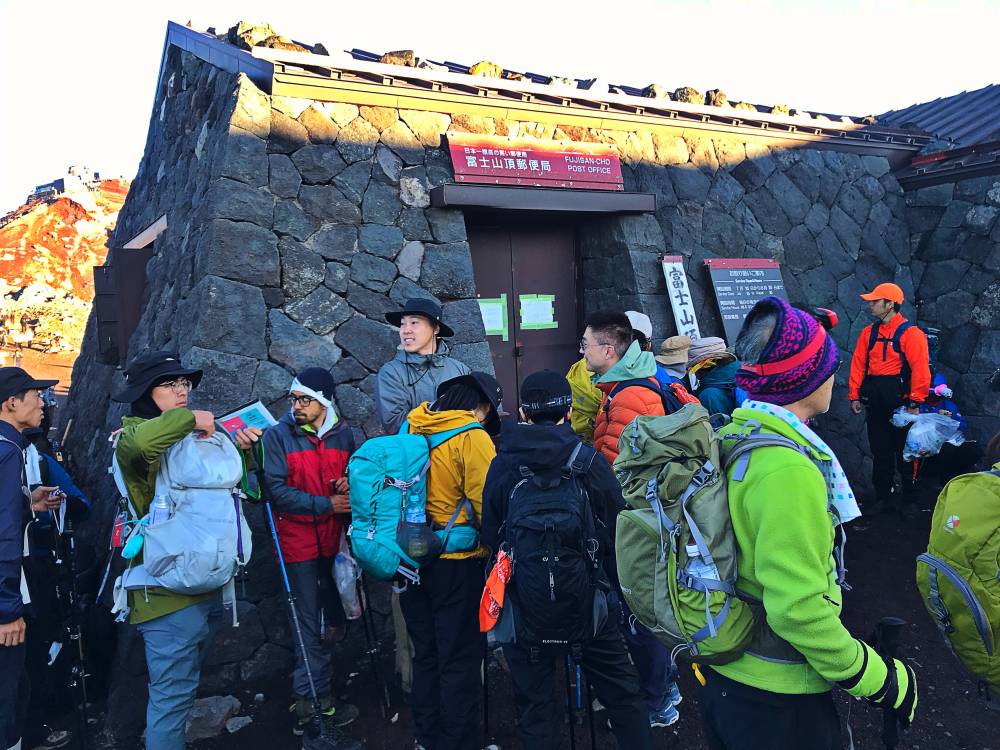
Train for the hike. The Fujinomiya trail starts at 2,400 meters. While you only have to climb 1,376 m to conquer, your physical and mental condition matters. In addition to monthly hikes, I also ran about 5-6 kilometers three times a week. Take altitude sickness seriously. Go slow and at your own pace, because altitude sickness is real. Notice the symptoms and, if it worsens, turn back.
The cost. It’s a bit costly to climb. An overnight stay in a mountain hut is ¥8,000 (about P3,000) upward. A bottle of water costs ¥500 (P195). Toilet use costs between ¥100 (P40) and ¥300 (P120). An oxygen canister is about ¥1,500 (P585). Meals start at ¥1,000 (P390). Add to these the transportation cost to the trailhead, the Yoshida Trail climbing fee of ¥2,000 (P780), and an optional Mt. Fuji Conservation contribution fee of ¥1,000 (P390).
Dress appropriately and be equipped for the hike. The key essentials for me were a hiking jacket, a good pair of hiking shoes, my trusty 30L hiking backpack, and a hat. I’ve never been more grateful for a pair of trekking poles and, believe it or not, gaiters which my friend Ivan got for me. The descent via the scree slope of the Yoshida trail without the gaiters would have been an annoying one.
Appreciate the experience with your eyes rather than with your phone or camera. I know it’s difficult. I wanted to take plenty of photos and videos as a souvenir. But just ask yourself if you’re willing to be a fool to climb Fujisan a second time to be in awe of the nature all around you.

I think I would, though. Two reasons: to do the Ohachi-meguri crater loop walk, a 2.6-km walk around Fujisan’s crater, and to visit the Kengamine Peak, which is the true summit of Mt. Fuji at 3,776m. Apparently, the summit I reached was only at 3,712 meters. So maybe, see you on the trails of Fujisan next year.
Angelo Morales is a Filipino living and working in Japan.





